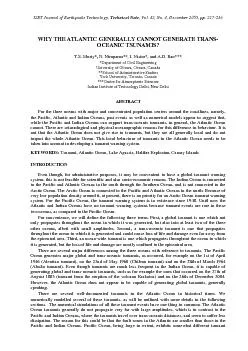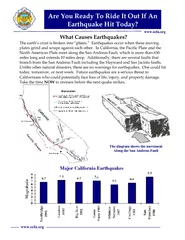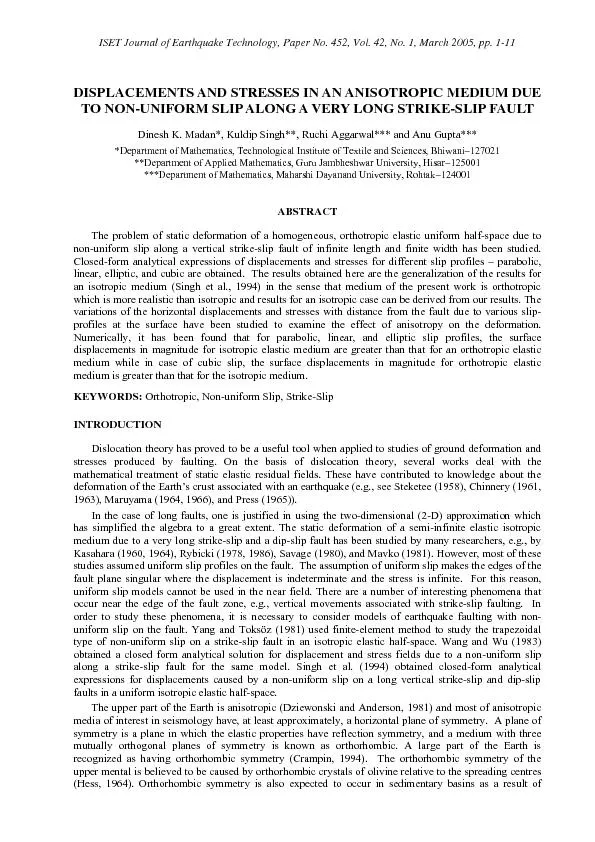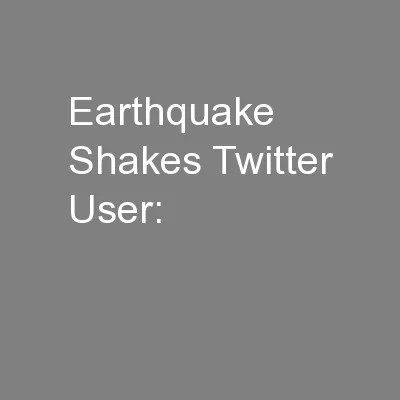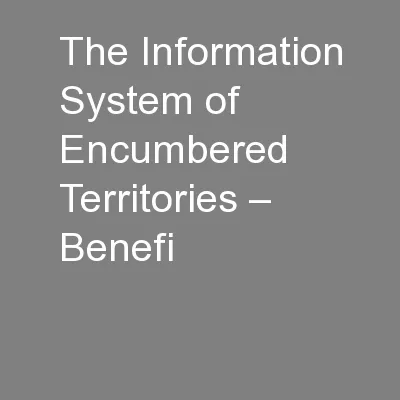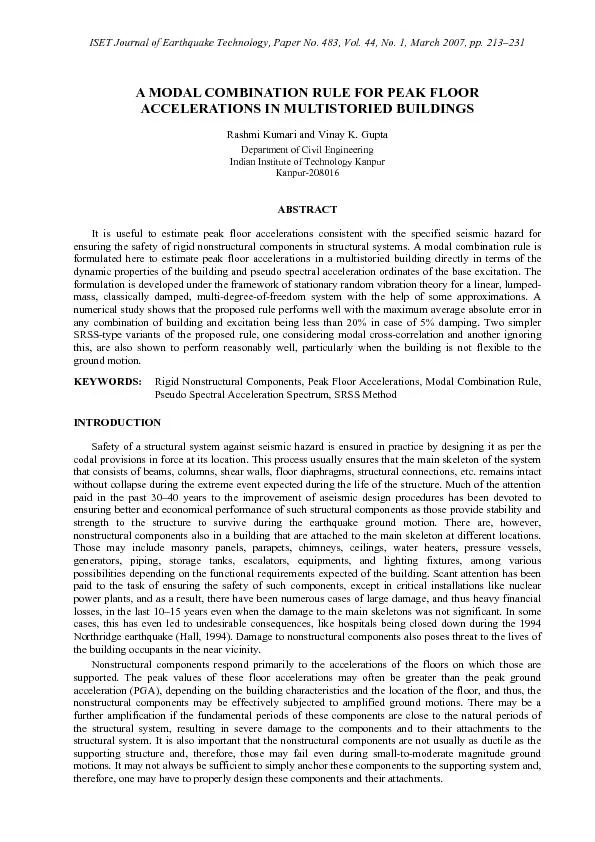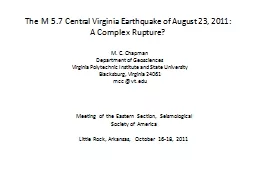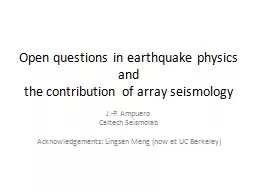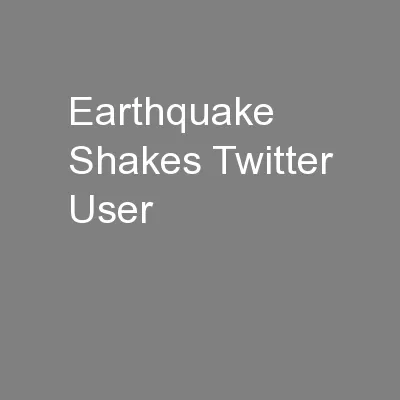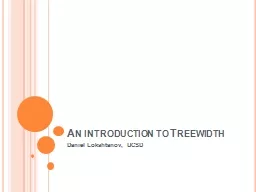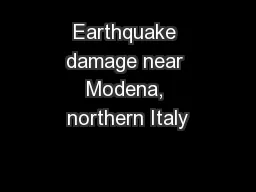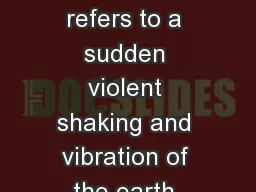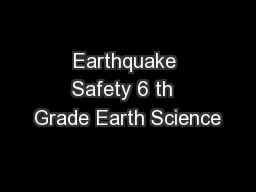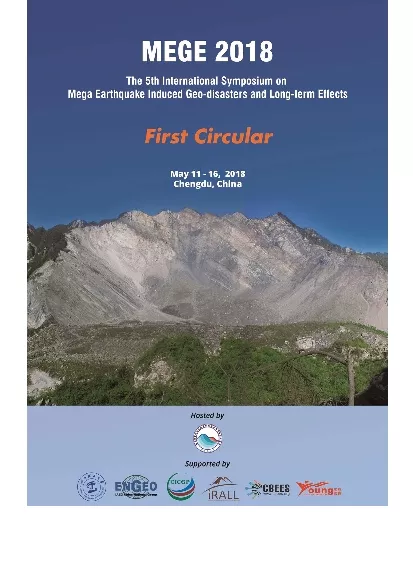PDF-ISET Journal of Earthquake Technology, , Vol. 42, No. 4, December 2005
Author : tatyana-admore | Published Date : 2016-02-23
ISET Journal of Earthquake Technology December 2005 231 Fig 6 Contours of maximum tsunami amplitudes in m for a over the full domain and b enlargement of the harbour
Presentation Embed Code
Download Presentation
Download Presentation The PPT/PDF document "ISET Journal of Earthquake Technology, ,..." is the property of its rightful owner. Permission is granted to download and print the materials on this website for personal, non-commercial use only, and to display it on your personal computer provided you do not modify the materials and that you retain all copyright notices contained in the materials. By downloading content from our website, you accept the terms of this agreement.
ISET Journal of Earthquake Technology, , Vol. 42, No. 4, December 2005: Transcript
Download Rules Of Document
"ISET Journal of Earthquake Technology, , Vol. 42, No. 4, December 2005"The content belongs to its owner. You may download and print it for personal use, without modification, and keep all copyright notices. By downloading, you agree to these terms.
Related Documents

